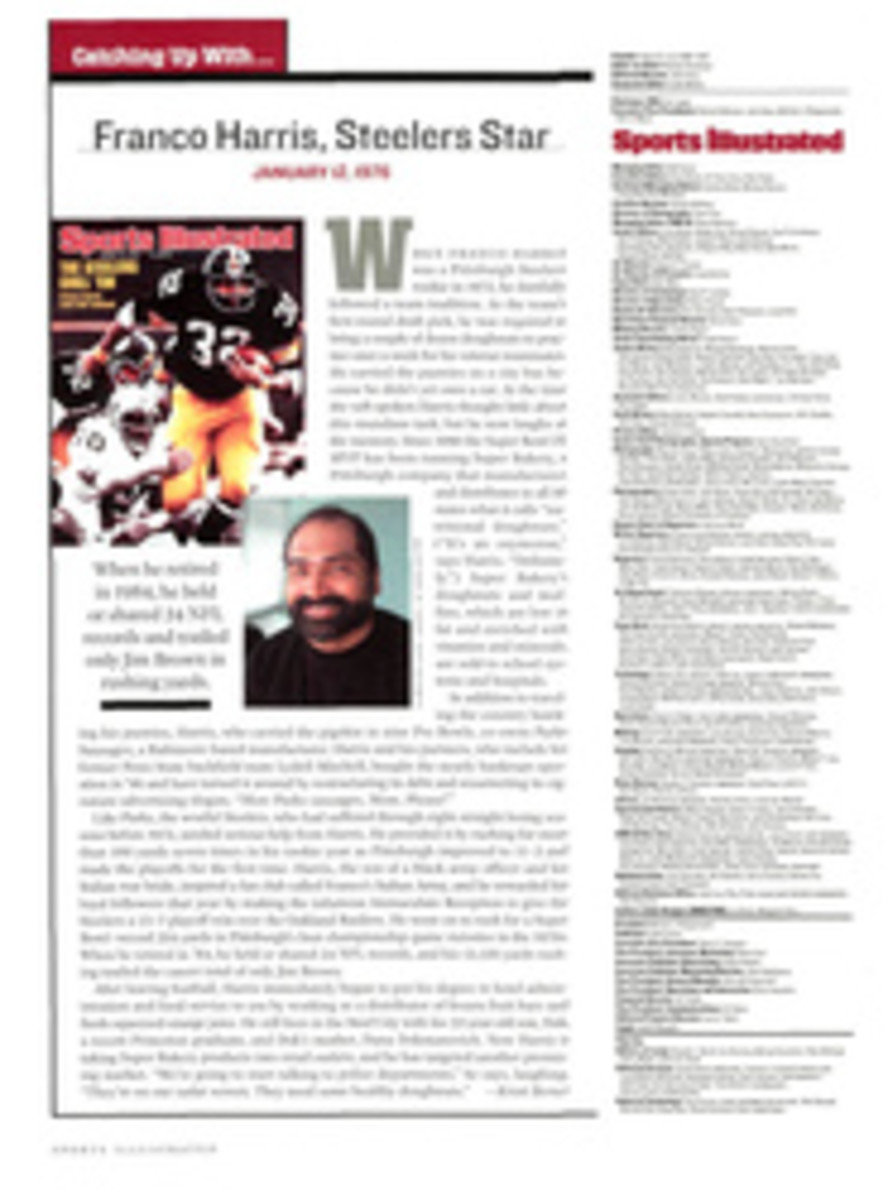
Inside Out NEWS AND NOTES FROM THE WORLD OF ADVENTURE SPORTS
Urban Warriors
A city-based, time-friendly adventure racing series is so
popular that the toughest part is getting in
Michael Epstein cut a striking figure in the predawn darkness as
he gazed upon the waters of Folsom Lake, near Sacramento. His
olive-drab bush hat sat low on his brow, its brim folded up on
one side, to rakish effect.
Dashing uniforms for adventure-race directors is a tradition
begun 12 years ago by Gerard Fusil, father of the Raid Gauloises,
and knocked off without shame or apology by Mark Burnett,
inventor of the Eco-Challenge. Epstein, founder of the Hi-Tec
Adventure Racing Series, has earned the right to stand
fashionably in their company. He is the Henry Ford of this sport,
the man who brought adventure racing to the masses. At 7:30 a.m.
on Aug. 19, on the banks of Folsom Lake, the fifth of this year's
eight Hi-Tec races began. This also happened to be the largest
adventure race in history--with some 350 three-person teams toeing
the line in Hi-Tec's formfitting singlets, a fact Epstein saw as
a mixed blessing. "Normally we cut it off at 330 teams," he said,
half apologizing, "but someone forgot to shut off online
registration." When Epstein's people finally did stop taking
entries, a black market for them sprung up online.
Plenty of Epstein's peers would love to have his problems. While
other adventure races wither and die for want of more entrants,
the six-year-old Hi-Tec series turns them away in droves. One had
only to see the two-acre transition area at Folsom Lake fill with
more than a thousand racers to understand that adventure racing
is healthiest at its grassroots level. The series travels to
Hartford (Sept. 8), Pittsburgh (Oct. 7) and New York City (Oct.
21). (For additional information on these races, go to
www.mesp.com.) "The Hartford race is sold out," says Epstein. If
you really want in, check the black market.
Epstein's races sell out because they're within the capability of
all but the most flaccid weekend warrior. The Folsom Lake course
featured roughly six miles of trail running, a two-mile kayak
course and a 10-mile mountain bike ride, a trek which took less
than 2 1/2 hours for the top teams to complete. Some veterans of
longer adventure races look down their noses at Hi-Tec events, a
sentiment that infuriates Hi-Tec competitors. "Excuse us," says
Bob Gehlen of Team King Oscar, "for having jobs and families, and
for not being able to train 20 hours a week and leave the country
for three weeks to do a race. And while you're at it, take one of
your locking carabiners and put it where the sun doesn't shine."
Adventure-racing snobs say Hi-Tec events are little more than
muddied-up triathlons. That's a bogus charge. While teamwork is
an alien concept in a triathlon, it's an absolute requirement in
a Hi-Tec race. The Folsom Lake course featured eight of Epstein's
signature "special tests," micro-ordeals with such names as the
Cargo Net Kayak Crossing, which requires teams to get themselves
and their boats up, over and across 30 feet of cargo net. Only
through cooperation and problem-solving could these tests be
passed.
Teams are even encouraged to help their opponents. There was Bob
Schultz, boosting strangers over the 12-foot wall an hour after
his squad, Team Balance Bar, had won the race with a time of
2:13:28. A former pro mountain biker from Encinitas, Calif.,
Schultz has a soft spot for competitors who take four or five
hours to complete the course. "These people have my respect," he
says. "They're suffering a lot more than I am." --Austin Murphy
Etc.
The broken right leg Hermann Maier (above) sustained in a
motorcycle accident last week will most likely deprive the 2002
Salt Lake City Games of its biggest star. The accident is just
as costly for the Austrian downhiller, who, for all his
brilliance, enjoys only modest recognition outside Europe. A
repeat of his performance at the 1998 Nagano Games (gold medals
in the giant slalom and Super G) under the much brighter
spotlight of the Salt Lake stage would have accorded him status
as arguably the greatest Alpine skier ever.... When he gazed
upon the Statue of Liberty last week, Thierry Devaux, like so
many foreigners before him, saw a land of opportunity. Except
the 41-year-old Frenchman was attempting to land on Lady Liberty
with a parachute. Alas, his chute became ensnared in the torch,
and he dangled in the air for about a half hour. After being
hoisted to safety, the uninjured Devaux--who was charged with
four federal misdemeanors--denied his flight was a publicity
stunt. "It's an artistic way for me to express myself," he said,
"a sort of communion between what I'm doing and the place where
I'm doing it."... Lance Armstrong finished 58th in last week's
Vuelta a Burgos, which was won by Spain's Juan Miguel Mercado.
The three-time Tour de France champion--who, curiously,
struggled in the Spanish mountains--will next compete in the San
Francisco Grand Prix on Sept. 9.
COLOR PHOTO: NATHAN BILOW Falsely accused of being a muddied-up triathlon, the Hi-Tec series demands teamwork for tests like the Chaos web.
COLOR PHOTO: MICHAEL J. LEBRECHT II
COLOR PHOTO: SIMON BRUTY
COLOR PHOTO: LARRY HARWOOD
COLOR PHOTO: EDMUND KEENE
COLOR PHOTO: DEBORA ROBINSON
COLOR PHOTO: NANCIE BATTAGLIA Biff of the month Tree hugger Tara Llanes was cruising down Mount Snow during the NORBA women's downhill finals until this arboreal interruption. Llanes climbed back on and finished 15th in the 26-woman field.
For Real
Skiing on grass might sound like the hallucinogenic stuff of
Warren Miller films, but it remains an immensely popular sport
in Europe, where the grass skiing world championships will take
place next week. Having long ago biffed in the U.S., grass
skiing is still offered at the Bryce Resort in Virginia. Though
some 2,000 people hit his last resort each summer, proprietor
Horst Locher admits his efforts to market the sport in the U.S.
feel less like a grassroots movement and more like watching
grass grow. "It's the best practice for snow skiing," Locher
says of his passion, in which regular ski boots strap into a
nylon tread system. (Think minibulldozer treads.) "I hope
interest in the sport increases, but I think we've hit a plateau."
Statitude
11,700
Miles, approximately, that Steve Fossett fell short of making the
first solo flight around the world in a hot-air balloon. "My
initial reaction was that this is the greatest disappointment of
my life," said Fossett of his fifth attempt at solo
circumnavigation, which lasted 12,695 miles before he terminated
it on Aug. 17 in Brazil, citing nasty weather over the Atlantic.
"But then, I suppose I've had many disappointments."
Good Surf
For more adventure, go to siadventure.com and check out these
features:
--10 ultramarathons for the hard core and the first-timer

